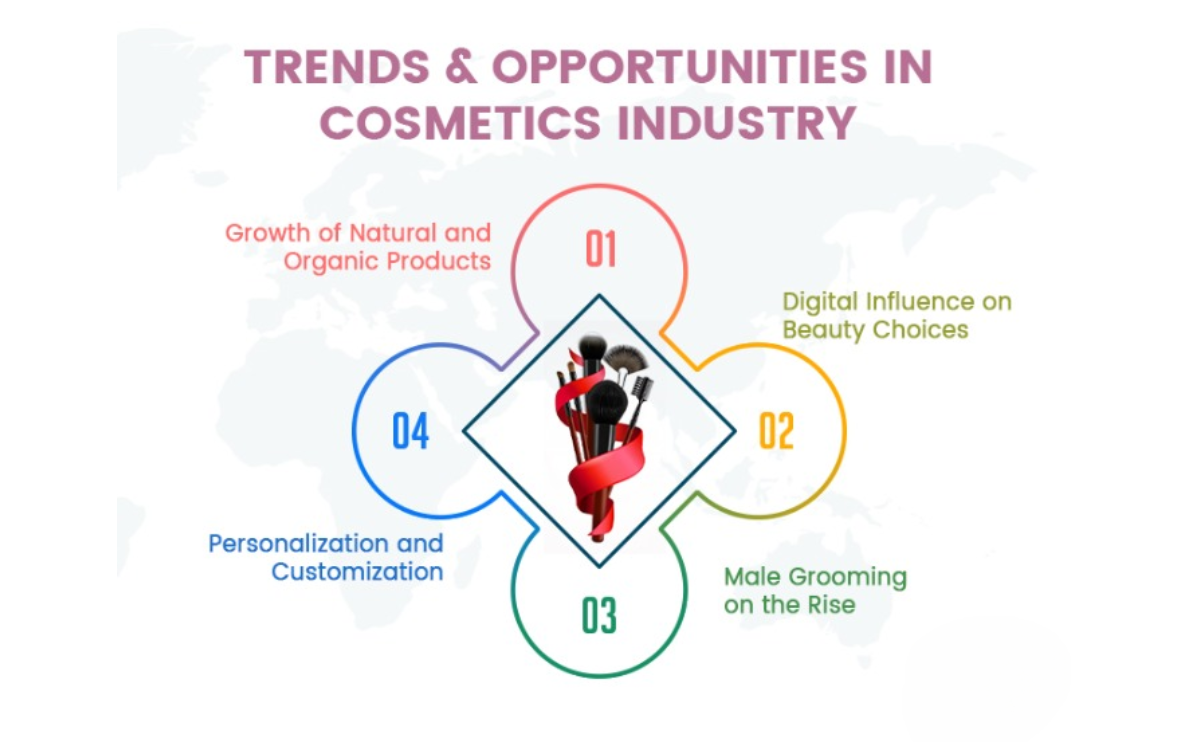The Indian cosmetic industry is undergoing a transformative evolution in 2025, marked by dynamic consumer preferences, cutting-edge technologies, and the rise of conscious beauty. For founders and brands aiming to make a mark in this thriving space, staying ahead of these emerging trends is key. At EquiBrand Ventures, we’re closely tracking these shifts to identify opportunities for innovation, scalability, and long-term success. Here are the top five trends and opportunities defining the cosmetic industry in 2025.
1. Virtual Try-On & AI-Powered Personalization
The demand for personalized beauty experiences has never been higher. Today’s consumers expect products that cater precisely to their unique skin tones, types, and concerns. According to a report by McKinsey, over 71% of consumers now expect a shopping experience tailored to their individual needs.
This demand is being met by AI-powered virtual try-on tools, which allow users to visualize how a product—be it lipstick, foundation, or hair dye—would look on their face in real-time. Brands like L’Oréal and Nykaa have invested in AR-powered tech, providing seamless personalization that bridges online and offline experiences.
For new and emerging cosmetic brands, investing in AI and AR tools offers a powerful way to build trust, reduce product returns, and enhance customer loyalty. Personalization is no longer a luxury—it’s an expectation.
2. Growth of Natural, Herbal & Organic Products
There is a conscious shift among Indian consumers toward chemical-free, sustainable beauty. Driven by increased awareness of product ingredients and post-pandemic wellness trends, buyers now prefer products with natural, herbal, and organic components.
A shining example is Mamaearth, a homegrown brand from Honasa Consumer. With its promise of toxin-free skincare and haircare solutions, Mamaearth grew over 400% during the COVID-19 era, proving that authenticity and transparency resonate deeply with today’s consumers.
This ongoing trend opens the door for ayurvedic and clean beauty startups to enter the market. Brands that combine tradition with innovation—using ingredients like turmeric, aloe vera, and neem—can tap into this growing demand for safe and sustainable beauty.
3. Social Media’s Influence on Beauty Decisions
In 2025, social media is not just a promotional tool—it’s where beauty decisions begin. Platforms like Instagram, YouTube, and Pinterest have become go-to destinations for consumers to discover products, follow skincare routines, and watch influencer reviews.
India’s beauty landscape is deeply influenced by content creators and beauty influencers. Brands such as Nykaa, Sugar Cosmetics, and Lakmé have capitalized on this trend by collaborating with micro and macro influencers to promote product ranges tailored to various skin tones, ethnicities, and preferences.
Interestingly, some emerging brands even buy followers or engage in influencer marketing campaigns to build credibility quickly. While this may seem controversial, it highlights the importance of building a strong and engaging digital presence in a cluttered market.
If you’re launching or growing a cosmetic brand in 2025, social-first strategies and influencer partnerships are crucial elements to consider.
4. Male Grooming is Booming
The stereotype that skincare is only for women is quickly fading. The male grooming market in India is projected to reach $1.84 billion by 2029, thanks to rising awareness, self-care trends, and the influence of digital content.
Brands such as The Man Company, Beardo, and Bombay Shaving Company are leading the charge, offering tailored grooming solutions—from beard oils and face serums to under-eye creams and premium razors.
Modern men are not just open to skincare—they’re actively seeking expert advice, product education, and quality formulations. This is a golden opportunity for niche startups to create male-focused grooming brands with strong storytelling, minimalist branding, and influencer collaborations.
Startups that can cater to male-specific skincare needs will find themselves at the forefront of one of the most promising segments in beauty.
5. Rise of D2C Brands with Omnichannel Strategies
The explosion of Direct-to-Consumer (D2C) brands is reshaping the way cosmetics are sold. While online platforms like Amazon, Flipkart, and brand websites remain vital, more consumers are looking for a hybrid experience—shopping online but also wanting the option to touch, test, and feel products in-store.
In response, many successful D2C brands are now implementing omnichannel strategies, combining online convenience with offline trust. From flagship stores and beauty kiosks to pop-up events and in-store AR experiences, brands are offering a seamless customer journey.
For beauty startups, this means designing a multi-touchpoint experience: strong digital presence, efficient logistics, and selective physical retail exposure. An omnichannel approach enhances brand visibility, customer engagement, and retention, especially in tier 1 and tier 2 cities.
The EquiBrand Ventures Perspective
At EquiBrand Ventures, we’re more than just observers—we’re partners in building future-ready consumer brands. Whether you’re an early-stage founder with a disruptive skincare idea or a D2C brand ready to scale, these 2025 trends highlight where the next big opportunities lie.
From tech-enabled beauty to conscious grooming, the cosmetics industry is ripe for innovation. And with the right mix of funding, mentorship, and strategic support, your brand could be at the forefront of this exciting evolution.

